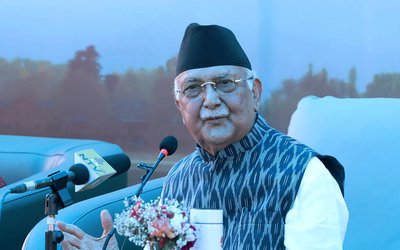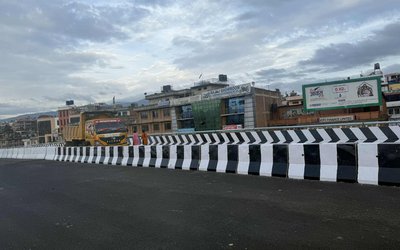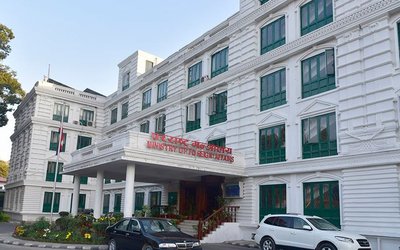More on News





Kidney pain ( renal colic) is a very common problem in medical emergency settings in Nepal. Pain is so severe that it may awake patients from their sleep. There may also be accompanying nausea and vomiting. The pain may go away only to return a bit later in an excruciating manner radiating from the lower back and going down the abdomen. The pain is described as having ”peaks and valleys”. Stones less than 5 mm in diameter often pass spontaneously in the urine; that is without any medical intervention. Drinking plenty of fluids helps. But stones > 10 mm in diameter do not usually pass without medical intervention. The usual treatment is surgery or where available , lithotripsy.
Lithotripsy is a non invasive method of using shock waves to crush the kidney stones. There is a laser lithotripsy too, but all of these measures can be expensive and unavailable.
So, some clinicians have suggested that a common blood pressure drug ( nifedipine, sustained release) which is relatively inexpensive and widely available be used first for stones around 5 to 10 mm or larger in size. This suggestion is based on recent studies which showed that with the usage of this drug, the increase rate of expulsion of the stone was higher and also the patient required less pain medicine ( analgesia). As anyone who has suffered kidney stones will testify, the relief with effective pain medicines during an attack of renal colic is something to be very thankful for. So if less pain medicine needs to be used, that in itself is helpful. Nifedipine apparently works by decreasing the spasm ( contraction) of the smooth muscle which are wrapped around the kidney’s plumbing system of pipes. If the stone can be passed in this manner, obviously this is beneficial for the patient as this is clearly a much less invasive method than even lithotripsy. Furthermore nifedipine is generally a well tolerated drug.
In the context of Nepal and in terms of cost effectiveness, nifedipine seems like a useful drug that possibly could be tried first before more more invasive methods of treatment is carried out. Of course drinking adequate amount of water to flush the stone out is a very useful and a simple strategy, but this alone may not do the trick unless if the stone is very tiny. For some people the drug nifedipine may cause dizziness and headache, but if patients can successfully deal with these side effects, the drug may be worth the effort.
There are other drugs besides nifedipine which have been tried successfully. But in our context this is the drug that is inexpensive and widely available. However it is important to discuss this option of using drug treatment for expulsion of the stone with your doctor before you go out and buy the drug and use it. The treatment needs to be properly supervised. This treatment may not work for everyone. Other tests may need to be done.





